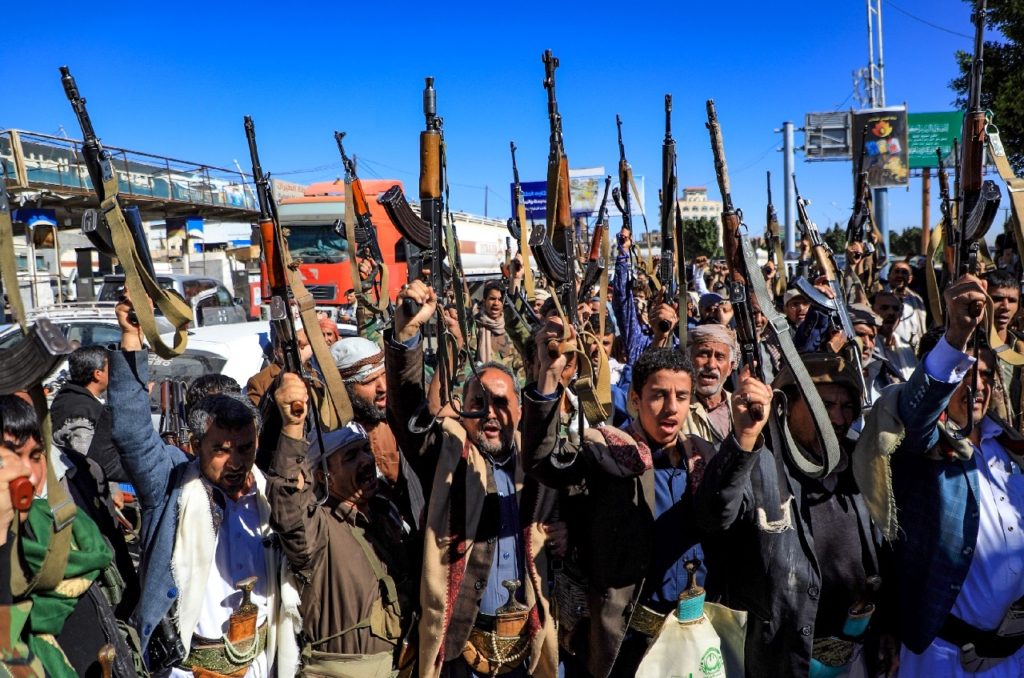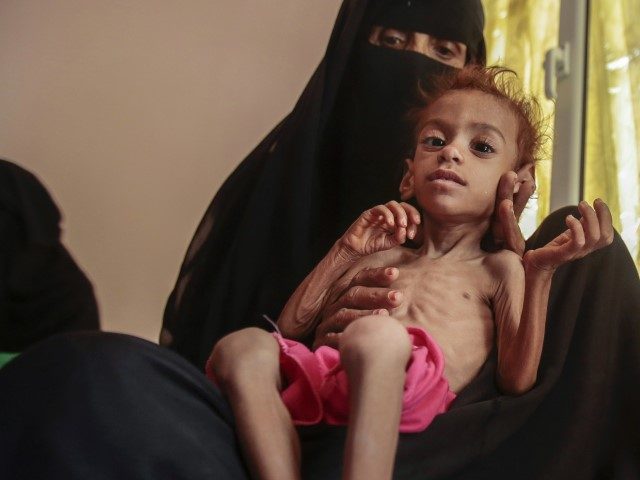The number of people facing “catastrophic” levels of hunger in Yemen is projected to increase fivefold from 31,000 currently to 161,000 by June 2022, the United Nations Children’s Fund (UNICEF) reported on Monday.
Yemen’s total population was estimated at 29.8 million in 2020. As of March 2022, 17.4 million people in Yemen were classified as in need of food assistance, a figure equal to 58 percent of the country’s population. The number of people in Yemen reliant on foreign food aid is expected to increase to 19 million, or 63.7 percent of the population, from June to December 2022.
The Integrated Food Security Phase Classification (IPC), which is comprised of 15 U.N. agencies and humanitarian groups, published a report on March 14 that analyzed Yemen’s ongoing food crisis.
“Of greatest concern is the 31,000 people facing extreme hunger levels (IPC Phase 5 Catastrophe) now, rising to 161,000 by June,” the organization stated.
The IPC uses a five-tier alert level system to determine the severity of a Yemeni region’s acute food insecurity. The five tiers include Phase 1: Minimal; Phase 2: Stressed; Phase 3: Crisis; Phase 4: Emergency; and Phase 5: Famine.
The organization also uses the term “Catastrophe” to refer to regions designated “Phase 5: Famine.”
The IPC’s March 14 report provided a forecast of Yemen’s food supply through December 2022. The analysis documented the current situation on the ground in Yemen in terms of its “acute food insecurity” and used this data to predict how the nation’s humanitarian crisis may continue to unfold in the coming months.
The IPC examined hundreds of districts within Yemen and determined the following:
[Regarding] Acute Food Insecurity: 151 of the 333 districts (45 percent) are currently classified in IPC Phase 4 (Emergency), representing a staggering 5.6 million people in the same phase. This increases to 233 districts (70 percent) in the projection period, representing 7.1 million (an increase of 1.6 million) starting June. In addition, three districts are currently identified to have pockets of population in IPC phase 5 (Catastrophe), totalling 31,000 people, increasing to 161,000 people in 23 districts during the second half of 2022.
UNICEF on March 14 noted Yemen’s ongoing political conflict “remains the primary underlying driver of hunger in Yemen.”

Yemeni supporters of Huthis rally in the rebel-held capital Sanaa on January 27; on Monday, the UN Security Council voted to extend an arms embargo to all members. (AFP)
Yemen has been the site of one of the world’s worst humanitarian crises since shortly after 2014, “when Iran-backed Houthi rebels took control of the capital, Sanaa, and much of the country’s north, forcing the government to flee to the south, then to Saudi Arabia,” the National, a United Arab Emirates (UAE)- based newspaper, recalled on Monday. “A Saudi-led coalition entered the war in March 2015, backed at the time by the US, in an effort to restore the internationally recognised government to power.”
Yemen relies almost completely on imports to sustain its fragile food supply. Ukrainian wheat, for example, accounts for 30 percent of Yemen’s wheat imports annually. Market disruptions caused by Ukraine’s latest war with Russia, which sparked on February 24, have threatened to cut off Yemen from its usual grain shipments from Ukraine.
The World Food Program (WFP), which is the U.N.’s food assistance branch, accused Houthis of interfering with its food shipments to Yemen in June 2019, claiming this prevented food from reaching starving Yemenis.
The Associated Press reported on the incident at the time, writing:
Yemen’s rebels last month turned back a World Food Program shipment meant to feed some 100,000 families in the war-torn nation that’s been pushed to the brink of starvation, a spokesperson for the aid agency said Tuesday.
The rejection of the shipment came as the WFP was in tense talks with the rebels, known as Houthis, who had blocked the agency’s attempt to register millions of Yemenis in need of aid by using biometrics as a means of preventing food aid theft. The WFP has mainly blamed the rebels for stealing the food aid. The rejected shipment will also deprive thousands of families of badly needed aid.
The administration of U.S. President Joe Biden formally revoked the Houthis’ former designations as a “foreign terrorist organization” and as “Specially Designated Global Terrorists” in February 2021. The action represented a reversal of former U.S. President Donald Trump’s decision in January 2021 to apply the labels to the Houthis. Some critics of the Trump administration’s decision to add the Houthis to official U.S. State Department terror lists in January 2021 argued the move would make aid deliveries more difficult.
“Our concern was that the designation would paralyze what is the world’s largest aid response,” Saltana Begum, the Norwegian Refugee Council’s (NRC) advocacy manager for Yemen, told Al Jazeera in February 2021. “There was the threat that people like myself could be criminalized or prosecuted for delivering aid.”
Biden’s administration invoked this criticism when explaining its choice to delist the Houthis as terrorists.
“Our action is due entirely to the humanitarian consequences of this last-minute designation from the prior administration, which the United Nations and humanitarian organizations have since made clear would accelerate the world’s worst humanitarian crisis,” the U.S. State Department said in a statement at the time.

COMMENTS
Please let us know if you're having issues with commenting.